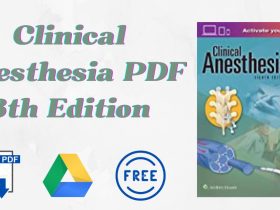#Preoperative Evaluation/
#Pulmonary aspiration:
Pulmonary aspiration involves the regurgitation of gastric
contents into the respiratory tract. The incidence of pulmonary
aspiration of gastric contents during general anesthesia
is about 1 in 5,000 anesthetics.
Patient populations prone to aspiration include pregnancy,
obesity, and trauma patients. The two modalities of regurgitant
material are the particulate matter and a pH < 2.5. This
may lead to acute lung injury manifested as pneumonitis,
aspiration pneumonia, respiratory failure, or acute respiratory
distress syndrome.
#Risk Factors for Pulmonary Aspiration/
• Increased gastric volume—delayed gastric emptying, diabetic gastroparesis, labor, pain, stress.
• Increased gastric regurgitation—decreased lower esophageal sphincter tone, achalasia, esophageal or abdominal surgery, increased intra-abdominal pressure.
• Decreased laryngeal competence—general anesthesia,
head injury/decreased conscious level, neuromuscular
disorders.
#Strategies to Reduce/Prevent Pulmonary Aspiration :
• Strict adherence to NPO guidelines(NO FOOD OR DRINK AFTER MIDNIGHT BEFORE SURGERY)
• Anesthetic techniques—rapid sequence intubation and
the application of cricoid pressure.
• Pharmacologic intervention—preoperative administration of nonparticulate antacids, histamine H 2 antagonists,
proton pump inhibitors, and prokinetic agents. For routine prophylaxis, metoclopramide (10 mg) and either famotidine (20 mg IV) or ranitidine (50 mg IV) may be
administered.




Leave a Reply